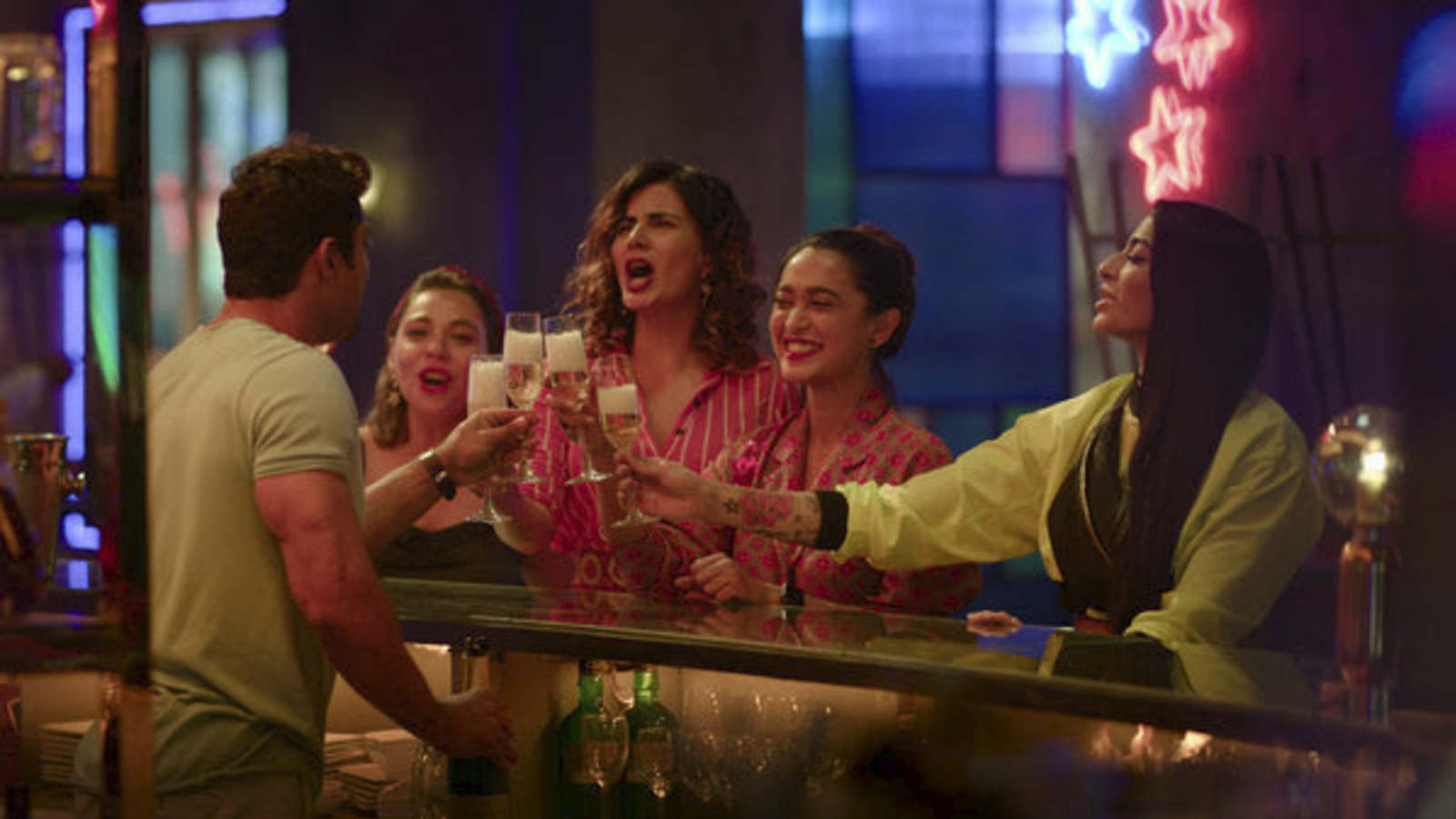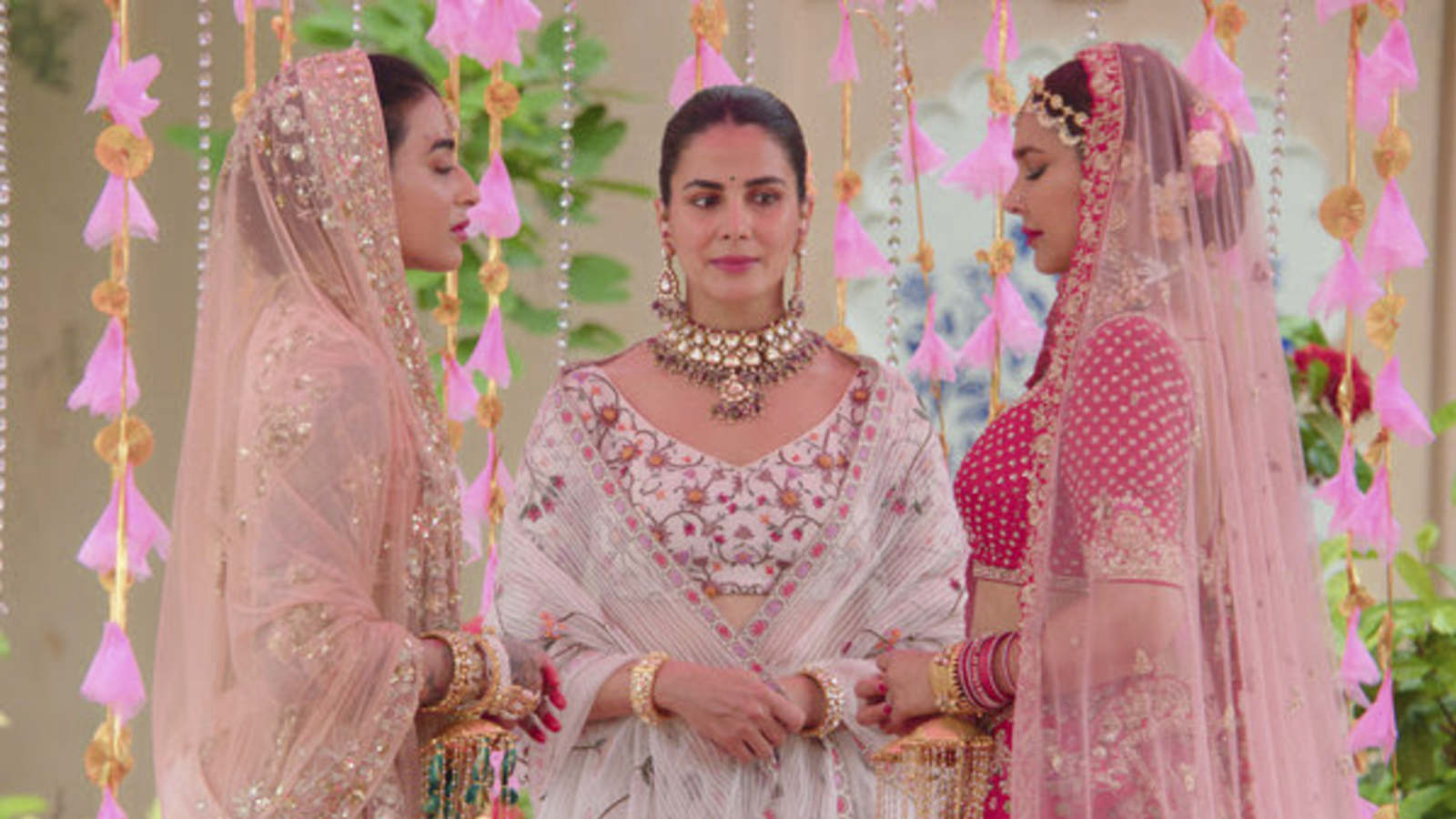With ‘Four More Shots Please!,’ India gets its own ‘Sex and the City’
by Alisha Haridasani GuptaWhen the HBO series Sex and the City arrived on TV screens in 1998, sex had become “the reigning political story,” according to writer Julie Salamon.
The show was a product and a catalyst of a zeitgeist in which financially independent and imperfect women had carved out a space for themselves and their casual, raging sex lives.

Now, Four More Shots Please!, an Amazon Prime Video series, hopes to be its direct descendant for India, where the mainstream TV and film industries have long shied away from showing even simple kissing on screen, let alone steamy sexual relations driven by lustful women.
The series is set in south Mumbai, one of the wealthiest districts in a country with staggering inequality, and much like Sex and the City, it revolves around four female characters: Damini, an investigative journalist played by Sayani Gupta; Umang, a bisexual gym trainer played by Bani J; Anjana, a lawyer and divorced mother played by Kirti Kulhari; and Siddhi, the aimless, single child of a wealthy family, played by Maanvi Gagroo.
And, yes, there’s plenty of casual sex. There’s also oral sex, gay sex, sex in an open marriage, sex in conference rooms, sex that disappoints.
Some of India’s more conservative viewers say there’s too much sex. But overall, the reaction to the show since the release of the first season last year has been “overwhelmingly positive,” the stars said repeatedly in a Zoom interview.

“It is very glamorous, it is very aspirational, it’s about female friendship and women bonding, which I think girls took very personally,” said Gupta, who has starred in several other unconventional roles, including a blind woman who falls in love with a woman with cerebral palsy in Margarita, With a Straw.
“There’s a certain kind of craze or cult following that the show has,” she added, “and you can’t really foresee these things.”
Season 1 of Four More Shots Please! was one of the top three Indian Amazon original series in 2019, becoming a success within India’s successful and rapidly expanding market of streaming content. Since the debut of Season 2 in mid-April, just as India went into lockdown because of the coronavirus, it has become Amazon’s most watched original Indian series this year, said Aparna Purohit, head of the company’s India Originals, beating more than a dozen other Amazon India shows.
And just weeks after the release of Season 2, Amazon announced Friday that another season was already in the works.
All four stars noted that people have often called them by their character’s names in public, which also resembles the reaction by women all over the world to Sex and the City, who proclaim themselves as Carries or Charlottes or Samanthas.
“I think that’s when, as an actor, you know that your character has left a mark,” said Kulhari, who has also portrayed complicated female characters in Bollywood films.
Across two seasons, the four women grapple with complex gender issues, from the country’s barely scratched corporate glass ceiling to homophobia, mental health and taboos around female sexuality — a sharp departure from the content offered in mainstream Indian entertainment.
Critics have claimed on social media that the show’s provocative content clashes with “Indian culture,” and other commenters, the stars said, have resorted to calling them vulgar names, like the Hindi word for prostitute.
“We’re a country and a culture that likes to sweep things under the rug,” said Bani, who became famous for her stints in Indian reality TV shows. “We don’t like paying attention to the ugly parts of ourselves, but this show kind of makes you do that.”
For decades, both Indian satellite TV and Bollywood, the Hindi filmmaking sector, served as mirrors of society, mostly reflecting the broader political and social norms of upper-caste Hindus. On TV, melodramatic soap operas focused on family dynamics, portraying women as extensions of men as their mothers or wives or daughters. And Bollywood offered predominantly male-focused narratives with women often playing purely decorative roles. Oftentimes, women appear in just one spicy song-and-dance spectacle that has absolutely no bearing on the plot.
“Films and TV have always shown women from a very male perspective,” noted Gagroo, who also stars in Bollywood’s first gay romantic comedy, Shubh Mangal Zyada Saavdhan, released in February. “They’ve usually painted women in one or two shades.”
In recent years, that formula felt increasingly out-of-touch for a young audience that is better connected with and exposed to quality content from around the world.
Credit for the provocative, envelope-pushing nature of Shots goes in part to its platform: the show is a byproduct of a blossoming streaming market that so far remains unfettered by India’s sensitive censorship board — a situation that has helped “democratise content,” said Amazon’s Purohit. And the series has been applauded for its female-dominated crew.
The show’s producer, director, cinematographer and editor are all women, an extremely rare feat in India. (In 2014, a study by UN Women and the Geena Davis Institute on Gender in Media found that for every woman behind the camera in the Indian film industry, there were 6.2 men.)
“The stories that haven’t been told before are now finally finding their way on screen,” Purohit said. “So it’s an amazing time for the customers who want to be able to watch all these diverse voices, and also for creators.”
Some critics, however, argue that the show isn’t necessarily feminist or empowering.
“It’s kind of like an account of the female experience in elite metropolitan Indian society,” said Kamayani Sharma, a New Delhi-based film and visual arts critic.
In Season 1, Sharma said, the characters are beautiful and endearing, fun and feisty, but lacking rich inner lives. They drink and have a lot of sex, which are simply “cosmetic devices to signify a certain kind of empowerment.”
But “just because something is not feminist doesn’t mean it’s not progressive,” Sharma added.
Season 2, despite its often absurd settings and awkward dialogue, raises the ante, Sharma noted, and the characters make bolder decisions, turning them into messier, more difficult-to-pigeonhole versions of themselves.
After discovering she is pregnant, Damini considers an abortion, which is still a fairly restricted procedure and a social taboo in India. Umang is in a loving relationship but struggles with the pressure to cater to her girlfriend’s career demands. Siddhi tries her hand at stand-up comedy and decides to stay single. And Anjana quits her high-paying job, despite having a young child to care for, and then knowingly sleeps with a married man.
“I have a problem when people think the show is not aligning with their idea of feminism,” Gagroo said. “It is a pluralistic concept, so it will have different meanings for you and me. But at the core of it is the agency of the female.”
A closer look at the class and caste divides that hold women back might have given the show greater depth, Sharma said. But at the very least, the show forces a discussion on feminism, she added — what it is and what it isn’t, and what the modern Indian woman looks like.
It challenges the Indian audience to “confront its collective fantasies and anxieties,” Sharma said.
New York Times